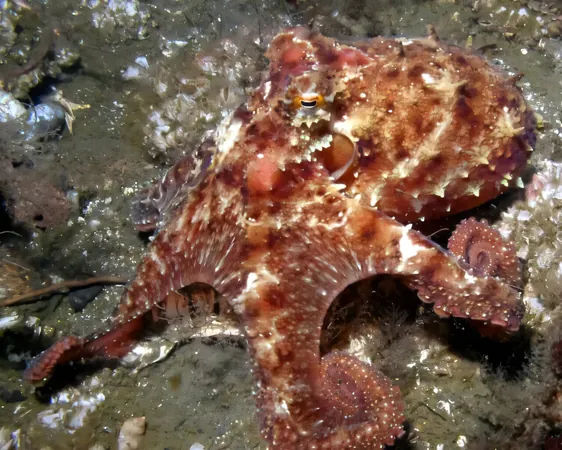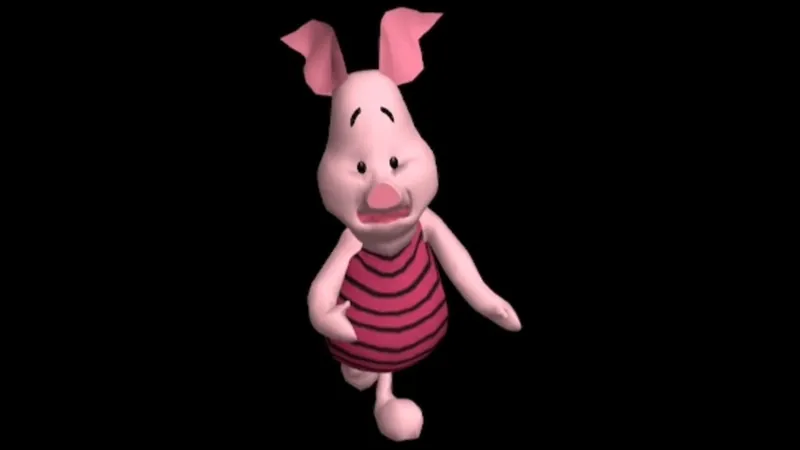
Revealing the Hidden Costs of Color Change: Ruby Octopuses Under the Microscope
2024-11-19
Author: Wei Ling
Introduction
A groundbreaking study from Walla Walla University, exploring the metabolic costs associated with color-changing abilities in ruby octopuses, sheds light on a fascinating aspect of marine biology. Published in the esteemed Proceedings of the National Academy of Sciences, biologists Sofie Sonner and Kirt Onthank embarked on a mission to quantify the energy expenditure involved in this remarkable ability.
Color-Changing in Animals
Color-changing is not exclusive to octopuses; many animals, including chameleons, frogs, and birds, show this adaptive feature for various reasons, such as camouflage, communication, temperature regulation, and sun protection. However, the speed at which these changes occur can vary significantly. The researchers were particularly intrigued by the question: do animals that can change color rapidly incur a metabolic cost?
Research Methodology
To uncover the answer, Sonner and Onthank captured 17 ruby octopuses and meticulously studied their oxygen consumption rates before, during, and after color transitions. By collecting skin samples and exposing them to a pulsing blue light, the scientists were able to isolate and observe the chromatophores—specialized pigment cells responsible for color change.
Innovative Approach
An innovative twist in their methodology involved the design of a custom respirometer that accurately measured the octopuses' oxygen consumption as their chromatophores expanded and contracted. The results were striking. The average ruby octopus consumes around 219 micromoles of oxygen per hour during a complete color change, a finding that equates the energy expenditure of color transformation to the collective energy used for all bodily functions at rest.
Behavioral Implications
This high metabolic cost could explain the behavior of octopuses when they opt to retreat into dens rather than exhibit vibrant color displays. By staying concealed, they can effectively ambush prey without engaging in the energy-intensive process of changing colors—a strategy that showcases their intelligence and survival instincts.
Broader Implications
The implications of this research extend beyond ruby octopuses. It invites further exploration into the energy dynamics of other color-changing species and broadens our understanding of how habitat choices may be influenced by metabolic demands. Are these organisms more than just skilled chameleons of the sea? This fascinating inquiry has only just begun.
Conclusion
As conservation efforts ramp up, understanding the metabolic costs of life in the wild could inform strategies to protect these intelligent beings and their delicate ecosystems. Stay tuned for more revelations from the depths of the ocean!



 Brasil (PT)
Brasil (PT)
 Canada (EN)
Canada (EN)
 Chile (ES)
Chile (ES)
 España (ES)
España (ES)
 France (FR)
France (FR)
 Hong Kong (EN)
Hong Kong (EN)
 Italia (IT)
Italia (IT)
 日本 (JA)
日本 (JA)
 Magyarország (HU)
Magyarország (HU)
 Norge (NO)
Norge (NO)
 Polska (PL)
Polska (PL)
 Schweiz (DE)
Schweiz (DE)
 Singapore (EN)
Singapore (EN)
 Sverige (SV)
Sverige (SV)
 Suomi (FI)
Suomi (FI)
 Türkiye (TR)
Türkiye (TR)